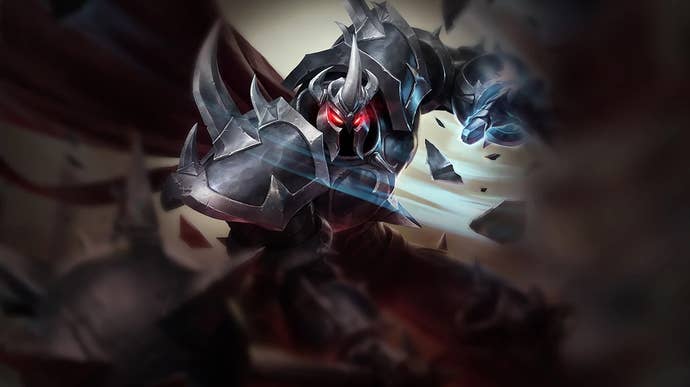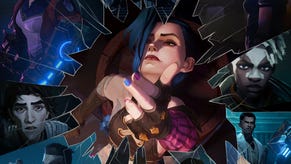"Think of it like a theme park" League of Legends' game director talks new game modes, and the importance of mixing things up
Game director Pu Liu speaks on why adding new game modes to League is a good idea.
League of Legends has been around for a long time. In fact, later this year we'll be hitting the game's 15th anniversary, which is sure to make a certain slice of the OG playerbase feel especially ancient. It should go without saying that the video game industry as a whole has shifted quite a bit in that time, with the wants and needs of players also having evolved.
As such, games that have been around the block a bit must adapt and shift in order to match these changing priorities. World of Warcraft has morphed considerably, as have pretty much all the long-lasting franchises still kicking, from Call of Duty to Pokemon. Riot Games' approach to keeping things fresh? New game modes. While summoners rift remains the central pillar for its popular MOBA, the game has seen a growing number of side attractions implimented over the years, with recent times notably marked with a rotating arsenal of limited-time events to help mix things up.
With the announcement of Swarm, a new Vamprie Survivors-esque mode coming this summer as part of an Anima Squad skin line activation, I sat down and spoke with League of Legends game director Pu Liu about the importance of mixing things up, how the team decides which games become permanent and when, and how this affects the bread-and-butter League player content with the rift.
Why is it so important to Riot to keep rolling out new game modes to League of Legends? If the core Summoner's Rift mode is where the ranked and esports component is based, what's the point in adding alternatives? The answer, according to Liu, seems to stem from the game's changing audience.
"The first thing I want to say is Summoner's Rift is extremely important to us," states Liu. "It has always been and will continue to be our marquee mode. It's what our esports is built off of, it's the legacy of League of Legends (LoL). It is this space in which champions and players' affinity and love for champions can be expressed in its purest and most diverse forms.
"That being said, if you look at LoL and the audience 14 years ago compared to now, people have changed a lot in terms of [what] their motivations are and who they are. Someone who started to play the game in beta is very different to someone who started playing the game two years ago. The latter may have grown up playing Minecraft, whereas I grew up with Starcraft and Warcraft 2 and 3. Very different frames of context in terms of the experiences they're used to and seeking. So, it's very important for us to change our paradigm a little bit from champions in LoL being these tools on a map, to the champions themselves being the experience. They have a visual identify and narrative flair to them that really attracts people."

Liu makes a comparison between champions in LoL and adult action figures (the safe-for-work kind, of course). Pointing to the team's attitude towards creating champions being as to appeal to a wide net of people, he says the hope is that these players will connect and identify a champion they love, then be able to play League through them. Through Summoner's Rift, sure, but also a slew of different modes like ARAM, Arena, and Swarm, for now – all different avenues for connection.
It's a statement that checks out when you look at changes made to the game in the later years of its life. Mastery ranks absolutely played a big part in allowing folks to lock in on their chosen champion, and with events like the upcoming Anima Squad Swarm mode and prior activiations like the old Spirit Bonds, narrative focus certainly allows for that. To Liu, this is all to embrace this changed playerbase. "We really want to embrace the fact that our audience has changed over the years and is more broad and diverse than it has ever been."
But this begs the question, how does this affect League players that are perfectly happy just playing ranked and climbing the ladder? It's certainly a high portion of the community, and one that does merit plenty of attention. Liu believes that in altering the approach it'll all feel like an expansion, rather than a change in focus.
"We're hoping to 'Yes, and?'" he says. "Think of it like a theme park. Maybe you're just there for the Star Wars ride, and want to ride that over and over again. That person is our Summoner's Rift enjoyer. We want to not downgrade that experience, we want to continue to serve that really well. They are our core and we love our core. But we also want to start building out the Buzz Lightyear ride and all these other different things! We have a lot of players who love Summoners Rift, but need a break every now and again. Maybe their friends aren't online so they can solo queue arena, or play Swarm, or whichever rotating game mode is available at a time. We hope that people who've played League for a long time see an addition of something new rather than a hard shift".

He elaborates with the nitty gritty of how this Roller Coaster Tycoon-style approach to improving a theme park, pointing to champion development as a prime example of how priorities have changed over the past 14 years. "Now, some of it is going to come as a consequence of resource repriotization. We have to think long and hard about what those players expect, what they value the most, and how to deliver that. For example, back in year one of League, each champion release was a big f**king deal! When you go from 40 to 41 champions it's a big deal. When you go from 167 to 168, it's still cool, but by definition it's for a smaller percentage of our audience."
"So, one of the things we've done over the past year and a half is go 'okay, are we allocating too many of our calories towards developing new champions'. Do players even want new champions? Every time there's a new one there's new complexity added to the game. So finding the right balance of 'yes, we think new champions are still valuable' but 'what are the type of champions we should be making', 'what [is] the rate of new champions?' All those things allow us to go, what about modes? What about rotating modes? What about other ways to play and other motivations that players might have."
It's worth noting that all of these alternative modes, including Swarm, have been limited-time activities that eventually leave the game altogether. Some, like Urf and Arena, have made consistent returns, though the team has made clear that they're slowly developing Arena to become permanent, eventually. This begs the question, if these modes are meant to serve a real purpose in regards to exciting players and require a hefty amount of resources to create, why phase them out at all?

Liu explains the thought process here: "With modes, we think of them as a dichotomy of things we hope to be evergreen, and things we believe are great for a small period of time - we may riff on them, bring them back, and iterate. Sometimes modes sit in the in between - so Arena is in that state, right now. We believe it has the potential to be an evergreen mode, but we're still finding the exact space it should live [in] to be complete. When you look at ARAM, that is never going away or being deleted from the game. We think those permanent fixtures serve evergreen motivations and cause people to keep coming back. They're very replayable, they are unique from the rest of the portfolio.
"With our rotating game modes we're much more experimental. We're setting the right level of expectations - we don't expect Swarm to come out and all of a sudden [double] our player base with players digging in for 10 years! That's an unrealistc set of goals, but we do think it's a good idea to deliver a novel experience for players in a certain PVE cooperative mode that doesn't exist elsewhere. We think it's interesting, that it'll get players excited about Anima Squad, and I think we'll learn from it. If we learn lots of positive things we're take them forward into future limited game modes and then who knows! There could be a version that turns into something that's evergreen."
Liu emphasizes that this is a slow, steady, careful process. If that rock-solid foundation of players start feeling underwhelmed by such a shift, then it'll be back to the drawing board. "If it were like, holy shi, we dialed down the number of champion releases and players really hate that, that would be a miss. We hope we're doing the thing that actually makes sense to players. Our goal is that people can understand the different approach and appreciate the recalibration. It should feel like year-over-year League of Legends is doing something I love, but also doing stuff that my friend who is a bit different than me also loves."
Whether or not this'll work out in League's favour is something we'll see in a matter of years, not weeks or months. The game as it is now, packed with ARAM, Teamfight Tactics, and more, is a vastly different beast than the original game I played back when I was at school. Striking the balance between serving the core base on Summoner's Rift and a wider, perhaps more casual base will be doubtless difficult. But, if Riot can pull it off, there's a chance it may take another transformative leap over the next 14 years.








